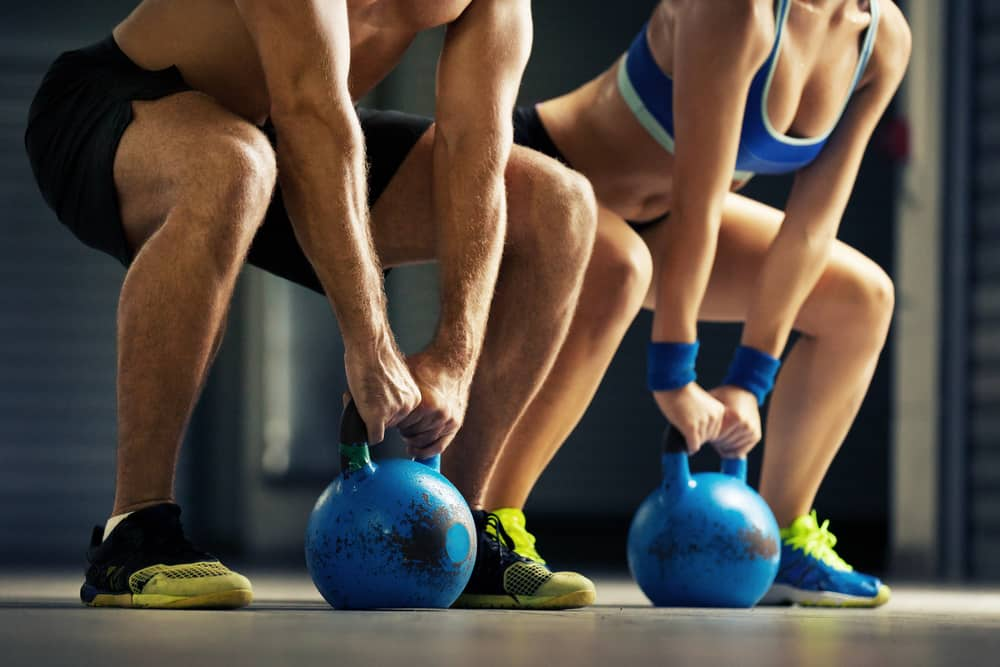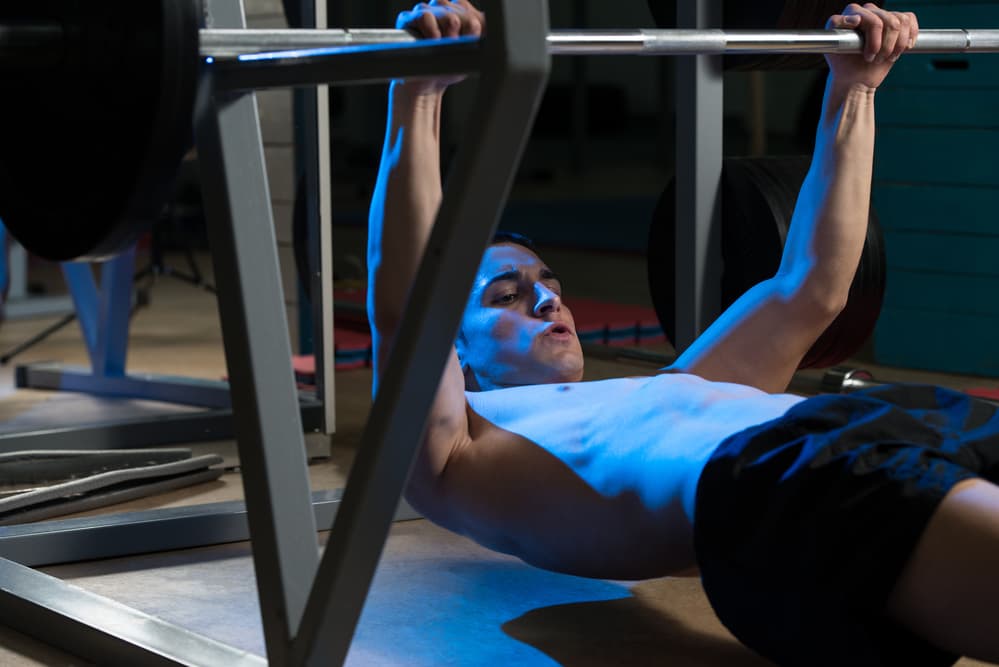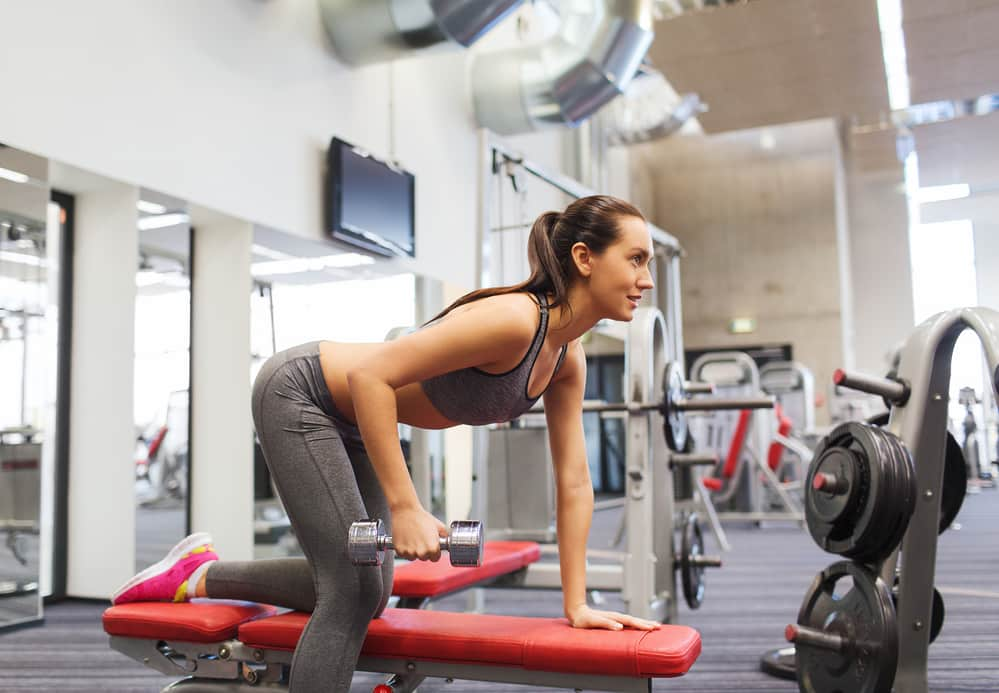An indoor rower may be too bulky, heavy, monotonous or expensive for you. In that case, exercise with these rowing machine alternatives and reap the same fitness benefits.
Some options you can use in place of a rower are a kettlebell, pull-up bar or power rack, barbell, dumbbells and resistance band. Aside from providing cardio and muscle toning effects, these choices are versatile, affordable or compact.
However, it’s not enough to own one of these at home. You need to know how to use them as if you’re rowing.
Keep reading and learn some alternate exercises you can do with these substitutes.
1. Kettlebell
A kettlebell is a cast-iron weight with a large handle in the middle. Find out more about kettlebells from this guide.
It’s a space-saving fitness device with varying weights to match your capacity and workout intensity.
With proper use, kettlebells can provide lots of benefits.
But if you want to use it as a rowing machine alternative, try adding these to your fitness routine.
Kettlebell swings
- Muscles worked: hamstrings, quads, core, glutes, lats and shoulders
- How-to:
- Place the kettlebell on the ground and stand behind it with feet slightly wider than shoulder-width apart.
- Bend your knees (tabletop position) and grip the kettlebell handle with both hands.
- Next, lift the kettlebell and swing it between your legs, then forward in front of you, about chest level.
- Swing the kettlebell back down between your legs and repeat 12-15 times.
- Tips: Keep your arms straight when you swing the kettlebell in front of you. Also, derive your swinging force from your legs and hips.
Kettlebell high pull
- Muscles worked: hamstrings, quads, glutes, traps, adductors and shoulders
- How-to:
- Place the kettlebell on the ground and stand behind it, with feet a bit wider than shoulder-width apart.
- Bend your knees, lower your hips (squat position), and then grip the kettlebell handle with both hands.
- Next, pick the kettlebell up as you stand up. Your hands should be at chin level and your elbows pointing up.
- Lower the kettlebell and return to a squat position. Repeat 12-15 times.
- Tips: Each time you raise the kettlebell, squeeze and activate your deltoids before lowering it. Keep the kettlebell close to your body.

2. Pull-Up Bar or Power Rack
A pull-up bar and power rack are excellent rowing machine alternatives for building and toning muscles.
They are two different exercise tools, though. A pull-up or chin-up bar is a rod with two brackets.
A pull up bar has several types to suit varying home gym spaces and fitness goals.
On the other hand, a power rack has four or six strong metal pillars with adjustable safety bars.
It looks like a cage where you can do barbell-based exercises.
Here’s what you can do with either to gain the benefits of rowing.
Inverted row
- Muscles worked: forearms, core, lats, deltoids, traps and biceps
- How-to:
- Set the pull-up bar or the bar of a power rack to your waist level. Lie under the bar facing up. The bar should align with your upper stomach.
- Grab the bar with an overhand grip. Make sure to keep your arms straight.
- Next, bend your arms and pull your chest towards the bar.
- Lower yourself back to starting position and repeat 12-15 times.
- Tips: As you pull your chest up, bring your shoulder blades together and contract your core and glutes. Also, to keep the exercise challenging, try lowering the bar further.

3. Barbell
Barbells are another type of free weight that can replicate resistance training from a rowing machine.
What makes these a more versatile option is the variety of exercises you can do with them.
You can lift weights while standing up, with an adjustable weight bench, on a squat rack and more.
Compared with a rowing machine, barbells also last longer and do not lose their value.
The initial investment is relatively lower, too.
Try doing this barbell exercise to get a similar rowing effect.
Barbell upright row
- Muscles worked: core, biceps, middle and upper back
- How-to:
- Hold the barbell in front of you, with arms straight and shoulder-width apart. Use an overhand grip.
- Next, pull the barbell up to chin level, bending your elbows outwards and above your shoulders. Keep your core engaged and your posture straight.
- Lower the barbell back to starting position and repeat 12-15 times.
- Tips: Avoid bending forward or hinging your hips as you lower the barbell. Then, use a weight that’s comfortable yet challenging to maintain proper form. Also, incorporate leg exercises into your routine as this move focuses on your upper body.

4. Dumbbells
If you do not feel comfortable using a barbell or have no room for it at home, you can use a pair of adjustable dumbbells.
They are not as bulky and easier to adjust, depending on your fitness level and exercise. Dumbbells are also more beginner-friendly than kettlebells.
Also, they are generally safer to use even when exercising alone.
Here are some dumbbell exercises you can do as alternatives to a rowing machine.
Dumbbell thruster
- Muscles worked: hamstrings, quads, core, glutes, triceps, back and shoulder
- How-to:
- Hold the dumbbells with either hand using an overhand grip. Stand with your feet should-width apart.
- Bring the barbells above your shoulders, bend your knees and squat down.
- Move to a standing position, then quickly push the dumbbells overhead. Your arms should be fully extended and straight.
- Lower the dumbbells to shoulder level, return to squat position and repeat 12-15 times.
- Tips: Avoid lifting dumbbells that are too heavy for you, but focus on doing as many repetitions. Also, try to do the standing and overhead lift in a continuous, exploding motion. It should help build strength, work up a sweat and optimise results.
Dumbbell bent-over row
- Muscles worked: core, chest, upper arms, shoulder and back
- How-to:
- Hold the dumbbells with either hand down by your side, using an overhand grip.
- Stand with your feet shoulder-width apart. Then, bend your knees slightly at a 45-degree angle.
- Next, bring the dumbbells up to your upper ribs, squeezing your shoulder blades together.
- Lower the dumbbells back to starting position and repeat 12-15 times.
- Tips: Imagine squeezing a pencil between your shoulder blades as you bring the dumbbells up. Also, you can do this as a unilateral or iso-lateral exercise with a weight bench.

5. Resistance Bands
This one is probably the most compact rowing machine alternative of all.
Resistance bands are versatile and ideal for full-body workouts, too.
Try this move if you do not have access to an indoor rower.
Resistance band deadlift
- Muscles worked: glutes, hamstrings and hip flexors
- How-to:
- Position your feet shoulder-width apart. Slip the resistance band underneath their arches, then hold either end with your hands.
- Bend your knees and lean slightly with hips hinged and bottom sticking out.
- Next, drive your hips and glutes forward and straighten your legs to get to a standing position.
- Lower the resistance band back and repeat 15-20 times.
- Tips: Keep your glutes contracted as you lower the resistance band. Also, maintain a straight and neutral back throughout the exercise. You can also try doing deadlifts with a barbell for a more challenging workout.

Conclusion
An indoor rower is an excellent, albeit fancy, exercise machine for total-body workouts. But there’s no need to worry if you cannot get one.
With several rowing machine alternatives, you can easily replicate this unique exercise to improve your cardiovascular health and target the same muscles.
Do compare rowing machine reviews with other gym equipment to see which one fits your goals, space and budget.
Related Questions
1. Is a rowing machine better than a treadmill?
Both gym machines can help you lose weight. But a treadmill is best for burning calories and shedding extra pounds quickly. On the other hand, a rowing machine is ideal for toning and developing muscle mass for healthy weight maintenance. Ultimately, use either fitness machine, then incorporate exercise variations for best results.
2. Which muscles do rowing machines tone?
A rowing machine targets over 80% of your muscles. Specifically, each rowing stroke is 65-75% leg work, which includes your glutes, quads and calves. It’s also a 25-35% upper body workout involving your arm, chest, upper back and core muscles. For optimum muscle toning, master the proper rowing form and pair your workout routine with a healthy diet.
3. How much should I pay for a rowing machine?
A quality rower can cost between $1000 and $1900. This mid-range category has machine options with a robust frame, warranty and feel. Also, these rowers often have balanced features that suit most fitness capacities or needs. Aside from the cost, make sure to identify the features that you need, too. And think about what type of rowing machine you prefer.
- Foldable vs Traditional Reformers: Which One’s Right for You? - 2 July 2025
- Elliptical Cross Trainer vs Exercise Bike: Which is Better? - 24 June 2025
- How Do the Different Massage Gun Attachments Work? - 23 June 2025
